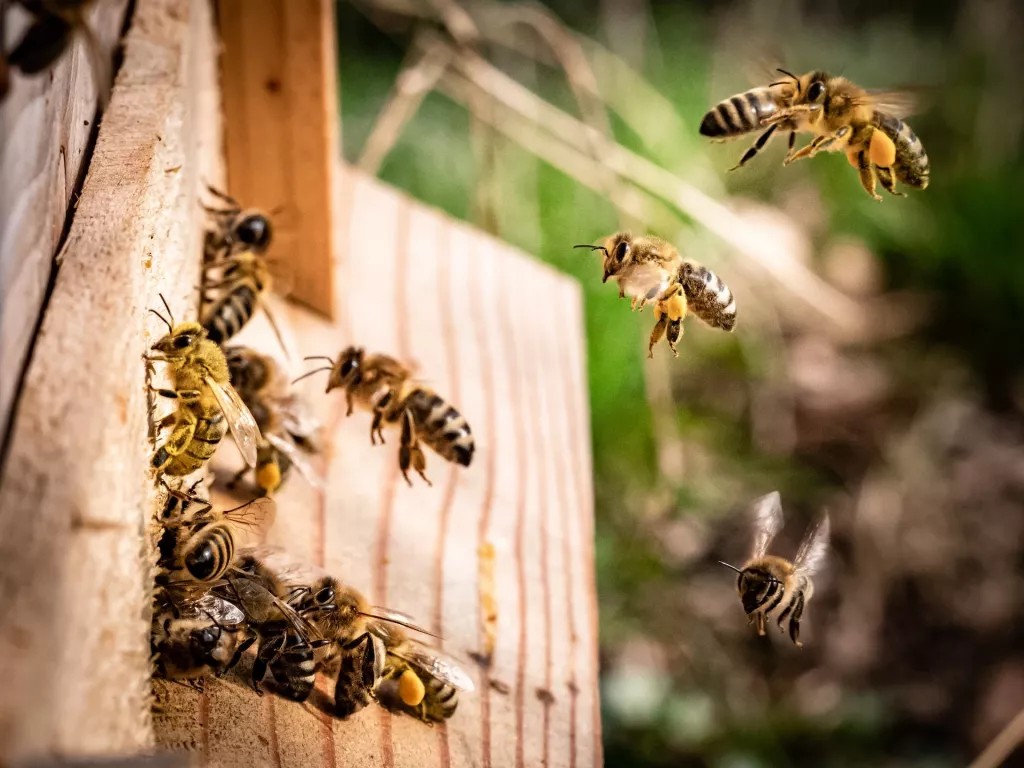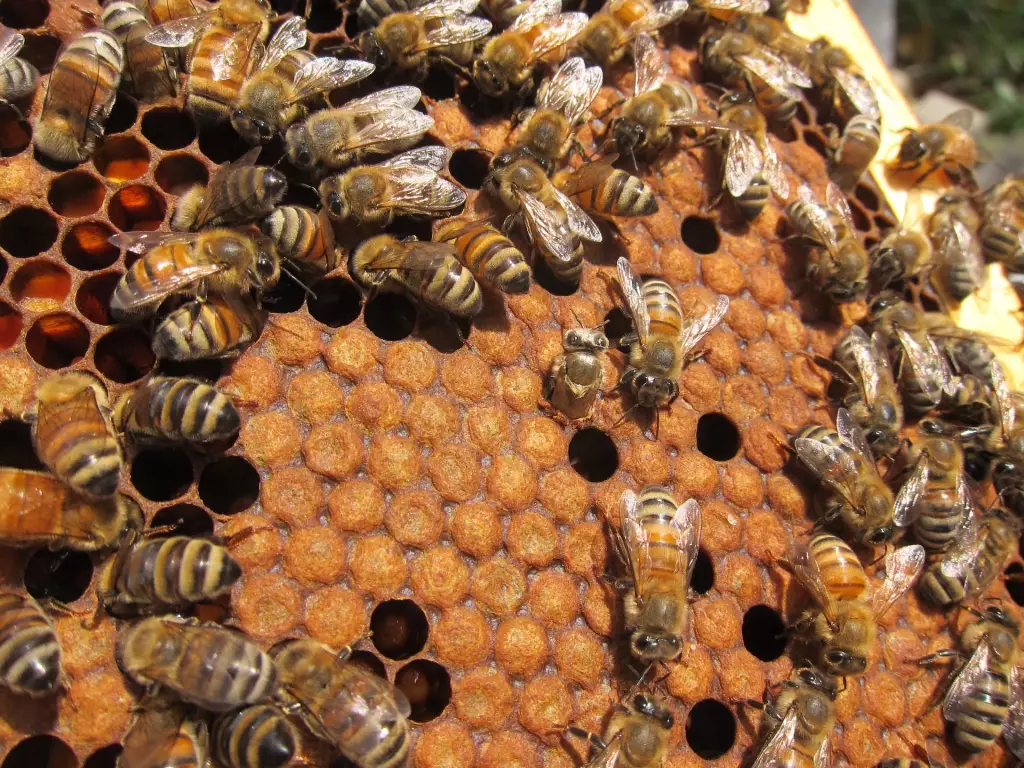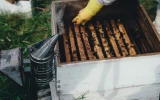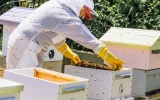How To Increase Beehive Population Easily (Every Time)
As one of the keystone species for human survival, bees are a crucial element in our environment. Yet research has shown a wide array of stressors such as pollutants, habitat loss, etc. have led to a slow decline in the bee population. Fortunately, the problem is reversible.
To increase the beehive population, consider placing the beehive in bee-friendly environments, avoiding insecticides, having a productive queen bee, and keeping a pest-free beehive. Splitting a well-established colony is another way to raise the bee population.
Bees are residents of the earth, just like us. They’re part of the biodiversity on which we all depend to survive. To learn more about how to increase the bee population, read the contents below.
Summary
- A bee-friendly environment is an ideal place for bee colonies to thrive and increase their population without any worries
- Maintain the hive's health status by checking in regularly for signs of pests, infestations or diseases
- A healthy, productive queen ensures the colony's survival
- Splitting a well-established colony helps increase the bee population

Increase Your Beehive Population Easily
Put them in a bee-friendly environment
Bees typically prefer to live in quiet, secluded spaces with lots of natural food sources. They also prefer places with lots of sunlight and warm weather. To create a bee-friendly landscape, you’ll need to provide a strong shelter for the hive and place it somewhere away from predators.
Once the right conditions are met, the colony can focus on increasing its population in order to expand. Trees, shrubs, fruits, vegetables, and flower gardens can be important sources of nectar and pollen for the bees.
Don’t forget, bees also need to drink water, so having access to a nearby water source is important. If a water source isn’t available, you can create a safe bee watering station. Bird baths, hummingbird feeders, and shallow containers filled with marble are good ideas since the shallow containers allow the bees to perch at the edge of the container without accidentally drowning.
Avoid insecticides
Insecticides are toxic to a lot of insects, including bees. Direct contact will result in immediate death. In the worst cases, a bee contaminated with insecticide can bring it back to the hive. The toxins spread out, infecting other bees, and this will result in a sick beehive. Even the honey and pollen can be contaminated, which sharply reduces the bee population.
If it can’t be helped and insecticide must be used to get rid of other pests in your garden, it’s recommended to use less toxic, rapidly degradable pesticides. These pesticides can reduce bee mortality. They’re also known to have a faster residual time, so by the time the bees are out foraging, the toxicity levels will be at a safer level for bee activity.
Check if your queen bee is productive
A bee colony’s survival largely relies on the queen bee. Her sole purpose is to reproduce and keep the bee population up. She releases a special pheromone that signals the bees that she’s healthy and well. In turn, the entire colony works hard to make sure she has everything she needs so she can keep laying eggs.

A healthy queen bee can lay up to 3,000 eggs per day and can live for up to 1–2 years. So it’s important to keep an eye out for the queen and how she’s doing. It’s common practice for beekeepers to mark the queen bee with a small spot of paint, so it’s easier to track her and avoid killing her.
Keep a pest-free beehive
It’s always a good idea to keep your hives free of pests such as varroa mites, wax moths, and hive beetles. During a regular hive inspection, always check for symptoms of pest infestation, parasites, or diseases within the hive. It’s important to take immediate action when you spot webbing from wax moths or mites, or see hive beetles crawling around the corners of the hive.
If your bee colony is strong, it can defend itself against these pesky invaders without any issues. But if that’s not the case, then you’ll need to step in and get rid of them. Check the hive’s comb to ascertain the health of the hive. Bees are naturally tidy insects, so a clean and well-maintained comb is a good sign they’re the only ones using it.
Split a bee colony
If you already have a well-established colony, then splitting your growing colonies is another way to easily increase the beehive population. Otherwise, they will swarm, and you could potentially lose a significant portion of your original bee colony.
To recognize any signs of swarming, you’ll need to closely study the bees' behavior and inspect the hive. Are there signs of overcrowding? Have you spotted queen cells among the brood cluster? Bearding behavior is also another sign of an overpopulated bee colony.
Remember that time is of the essence. You’ll need to prepare a new space and have the necessary bee box materials ready when the split happens. A walk-away split is the simplest way to separate an overcrowded hive.
Simply remove the top brood box from the beehive and place it on its own bottom board to form a new hive, then place a second box on each hive. The current bee can continue laying eggs in the old hive, while the worker bees in the new hive can raise a new queen bee.
Signs of a Healthy Beehive
1. Regular brood pattern
A regular brood pattern in a beehive is a positive sign the colony is doing well. That means the queen bee is doing her job in reproducing more healthy eggs, while the worker bees take care of the brood and ensure their survival.
Each brood cell should have a single egg in it, and a solid grouping of capped brood cells means there’s a healthy amount of brood that are about the same age. Any opened or uncapped brood cells mean that the worker bees have removed unhealthy larvae.

As a beekeeper, you need to keep a lookout for any irregular brood patterns or other issues such as pest infestations or diseases that can harm a brood’s health. Healthy larvae have a pearly white color and are curled up in their cells. Otherwise, any discolorations or malformed larvae are an indicator the brood is suffering from an illness or disease.
2. Abundant pollen and honey reserves
A plentiful supply of pollen and honey stores is a good sign your bees are healthy and productive. It shows they have enough food to make it through winter, and you can collect any excess honey reserves for yourself.
Inspect the frames for capped honeycombs. If 10 frames or more are capped at 80%, then it’s also a positive indicator the honey is ready to be harvested.
3. A thriving population
A healthy beehive relies on thousands of worker bees to keep the hive running smoothly. Without the hard work of a healthy population, there would be no bees out in the field foraging for food. Or if an intruder invades the beehive, there would be no guard bees to attack and fend off these invaders.
A colony also needs a strong, thriving population to cluster around the queen and keep the hive warm during winter. To check if your colony’s bee population is thriving, pay attention to the traffic around the hive’s entrance. Are there a lot of bees coming in and out during the foraging season?
Another way to estimate how many eggs are in a hive is to divide the number of sealed brood cells by 12. You’ll have an estimate of the number of eggs a queen has laid in a 12-day period ending 9 days prior to the measurement, the time for egg and open larvae. Results may not be accurate, but it is still a useful estimate.


